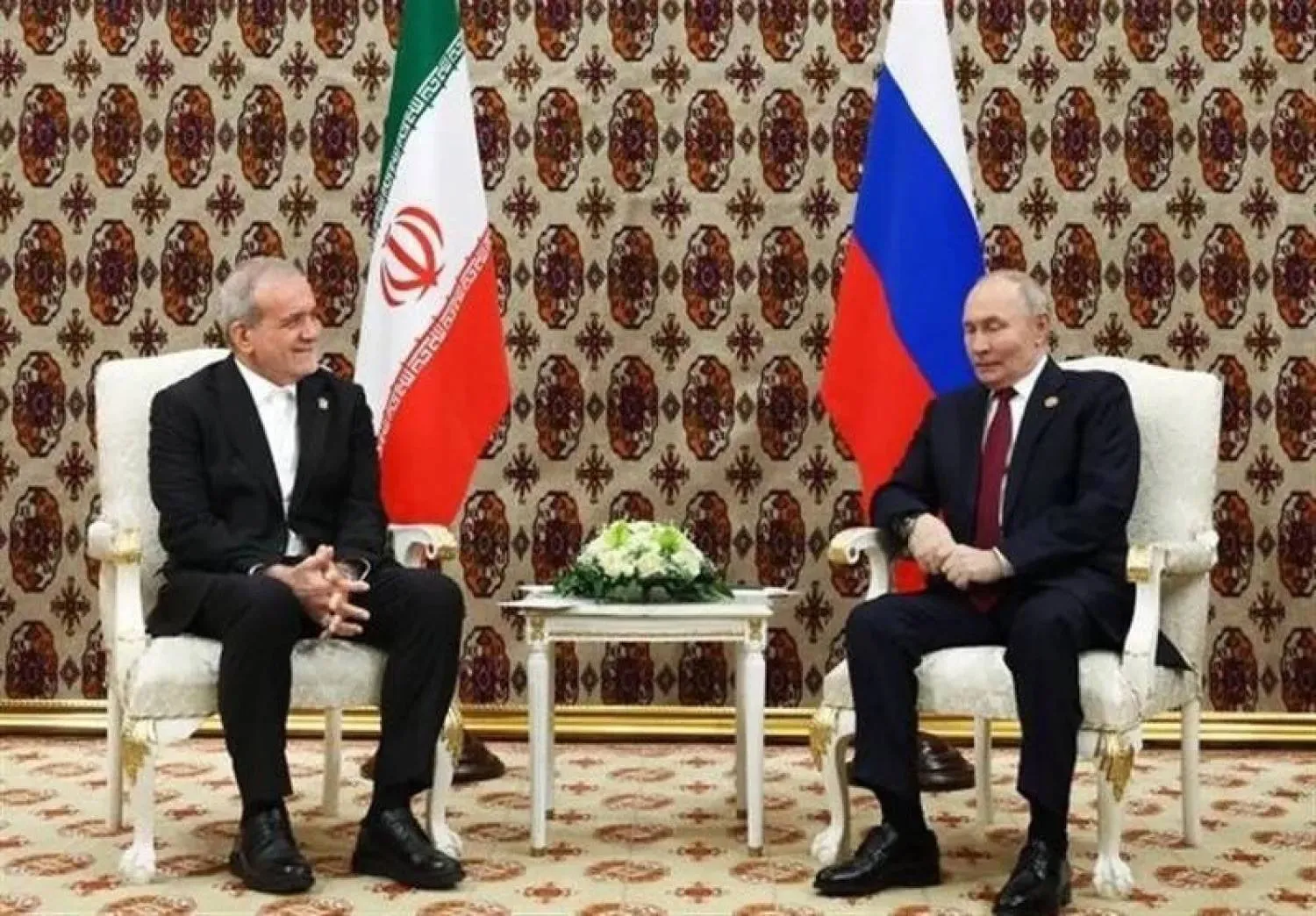Iran has moved a mock aircraft carrier to the strategic Strait of Hormuz amid heightened tensions between Tehran and the US, satellite photographs released Monday show, likely signaling the Islamic Republic soon plans to use it for live-fire drills.
An image from Maxar Technologies taken Sunday shows an Iranian fast boat speed toward the carrier, sending waves up in its wake, after a tugboat pulled her out into the strait from the Iranian port city of Bandar Abbas.
Iranian state media and officials have yet to acknowledge bringing the replica out to the Strait of Hormuz, through which 20% of the world's oil passes. However, its appearance there suggests Iran´s paramilitary Revolutionary Guard is preparing an encore of a similar mock-sinking it conducted in 2015.
The US Navy's Bahrain-based 5th Fleet, which patrols Mideast waterways, remains "confident in our naval forces´ ability to defend themselves against any maritime threat," said spokeswoman Cmdr. Rebecca Rebarich when asked about the faux carrier's movements.
"We cannot speak to what Iran hopes to gain by building this mockup, or what tactical value they would hope to gain by using such a mock-up in a training or exercise scenario," Rebarich told The Associated Press. "We do not seek conflict, but remain ready to defend US forces and interests from maritime threats in the region."
The replica resembles the Nimitz-class carriers that the US Navy routinely sails into the Persian Gulf from the Strait of Hormuz, the narrow mouth of the waterway. The USS Nimitz, the namesake of the class, just entered Mideast waters late last week from the Indian Ocean, likely to replace the USS Dwight D. Eisenhower in the Arabian Sea.
The replica carries 16 mock-ups of fighter jets on its deck, according to the satellite photos taken by Maxar Technologies. The vessel appears to be some 200 meters (650 feet) long and 50 meters (160 feet) wide. A real Nimitz is over 300 meters (980 feet) long and 75 meters (245 feet) wide.
Last summer saw a series of attacks and incidents further ramp up tensions between Iran and the US. They reached a crescendo with the Jan. 3 US drone strike near Baghdad International Airport that killed Qassem Soleimani, head of the Guard´s expeditionary Quds, or Jerusalem, Force. Iran retaliated with a ballistic missile attack that injured dozens of American troops stationed in neighboring Iraq.
Also, last week a US F-15 fighter jet approached a Mahan Air flight over Syria, which led to passengers on the Iranian jetliner getting injured.









